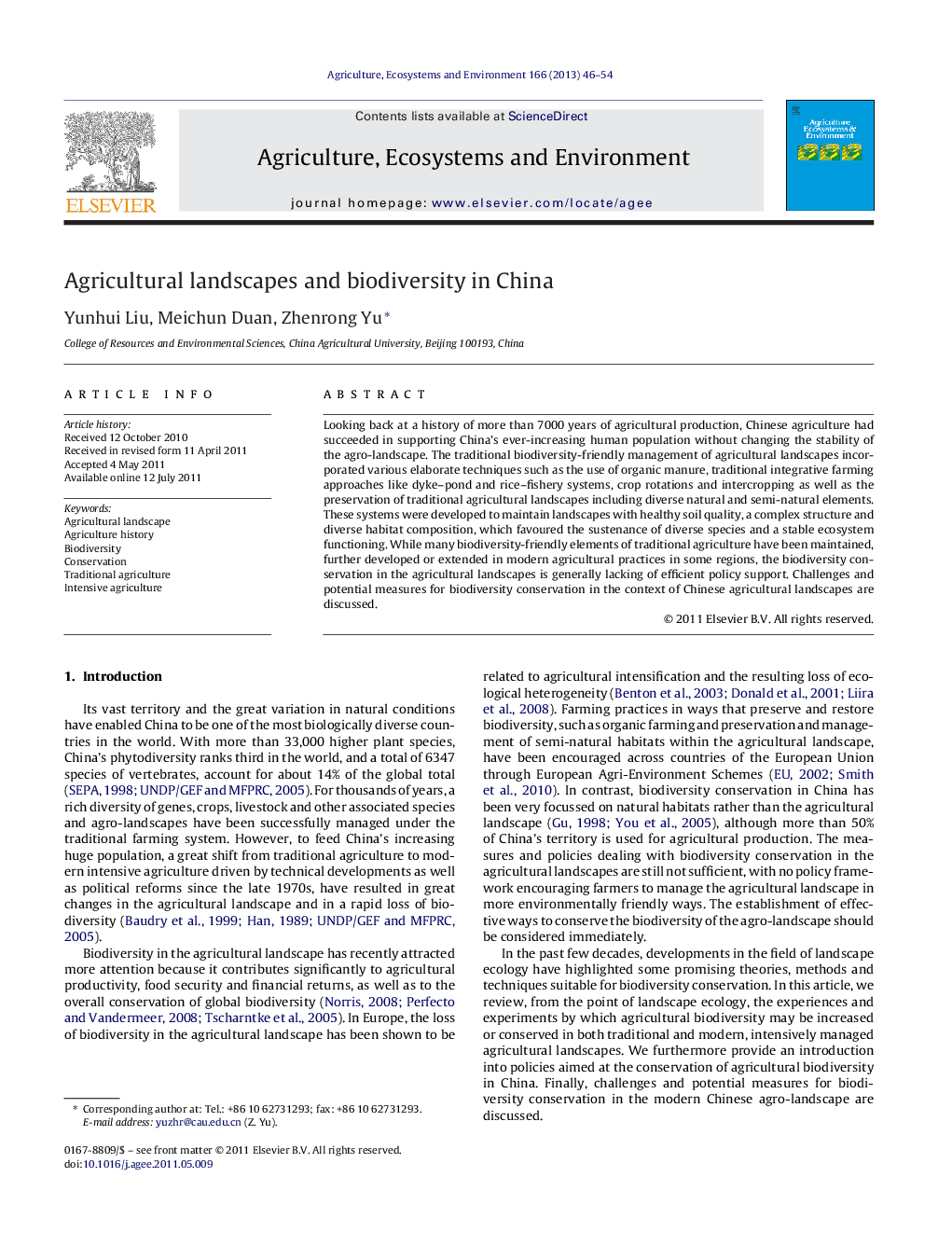| Article ID | Journal | Published Year | Pages | File Type |
|---|---|---|---|---|
| 2414343 | Agriculture, Ecosystems & Environment | 2013 | 9 Pages |
Looking back at a history of more than 7000 years of agricultural production, Chinese agriculture had succeeded in supporting China's ever-increasing human population without changing the stability of the agro-landscape. The traditional biodiversity-friendly management of agricultural landscapes incorporated various elaborate techniques such as the use of organic manure, traditional integrative farming approaches like dyke–pond and rice–fishery systems, crop rotations and intercropping as well as the preservation of traditional agricultural landscapes including diverse natural and semi-natural elements. These systems were developed to maintain landscapes with healthy soil quality, a complex structure and diverse habitat composition, which favoured the sustenance of diverse species and a stable ecosystem functioning. While many biodiversity-friendly elements of traditional agriculture have been maintained, further developed or extended in modern agricultural practices in some regions, the biodiversity conservation in the agricultural landscapes is generally lacking of efficient policy support. Challenges and potential measures for biodiversity conservation in the context of Chinese agricultural landscapes are discussed.
► We reviewed the experiences for biodiversity sustaining in Chinese agro-landscape. ► A series of wildlife-friendly agricultural practices had been developed. ► Modern intensive agricultural production exerts great threats on the biodiversity. ► Measures for biodiversity conservation in intensive agro-landscape were discussed.
